ELA Session #2: Practicing Professionalism
March 1, 2019
Arlington, VA
email cguske@aiava.org for details
ELA Session #2: Practicing Professionalism
March 1, 2019
Arlington, VA
email cguske@aiava.org for details
Project Kick-off
February 8-9, 2019
Northern Virginia
email cguske@aiava.org for details
Started in 2009, The Emerging Leaders in Architecture: An Honors Academy of the American Institute of Architects Virginia (ELA), develops future leaders in architecture firms, in communities, and in the profession. The goal is to accelerate the growth of emerging architects and provide the tools and experiences needed to advance their careers and serve society as leaders in the community.
The 2019 Class includes:
Macy Anne Carman-Goeke, Annesley Cole, Assoc. AIA, Ashley Falwell, Assoc. AIA, Karim Habbab, Assoc. AIA, Kelley Holmes, AIA, Sydney Huibregtse, Assoc. AIA, Breanna LaTondre, Assoc. AIA, Ryan Oldach Assoc. AIA, Jeffrey Rynes, AIA, Kelsey Sinichko, AIA, Ianta Summers, Zakiya Toney Assoc. AIA, Jeanne Vick AIA, Alexander Zondlo Assoc. AIA, Divya Nautiyal, Assoc. AIA and Ojima Glover.
The 2019 ELA Steering Committee are Christopher Kehde, AIA (Chair), Jennifer Stringer, AIA (Vice Chair), Gwyn Gilliam, AIA (Past Chair), Abigail Watson, AIA, Bruce Wardell, AIA, Scott Boyce, AIA, Spencer Lepler, AIA, and Taylor Clark, AIA.
The Emerging Leaders in Architecture program needs your support! Contact Cathy Guske, Member Services Director to discuss the various ways to show your support.
AIA Virginia announces the call for applications for the 2019 class of Emerging Leaders in Architecture (ELA): An Honors Academy of AIA Virginia.
ELA is an intensive program of educational sessions structured around presentations, discussions, team exploration, analysis, consensus-building, collaboration, and case study activities undertaken over the course of a year by a small cadre of participants selected for their potential to be outstanding contributors to the profession and the community. Facilitators and mentors who are established leaders in the building, finance, non-profit, development, university, legal, consulting, and design professions and in the community at large develop and deliver the sessions, designed to provide participants with advanced knowledge and skills related to specific areas of leadership and practice.
The program consists of seven, day-long seminars, several work sessions, culminating with a presentation at Architecture Exchange East.
The application is available here>>
The application deadline is Nov. 16, 2018.
The seminars are interactive, drawing on real examples and actively involving participants. They rotate among sites in Roanoke, Charlottesville, Richmond, Alexandria and Norfolk in conjunction with the firms, schools, and the local AIA component in each area.
How to Apply
The committee seeks applicants from three categories:
ELA Sessions at a Glance
Inheritance and Inspiration
Historically, architecture as a profession comes from a long-standing tradition of patronage and apprenticeship. Today, the profession of architecture has evolved into one that is forward-thinking and fast changing. It requires creativity and leadership for the commerce and culture it serves. As such, we inherit a status and obligation as architects to lead.
Serving Communities
Architects have a social responsibility to strengthen communities. This session evaluates how architects can lead by serving whether it’s in elected office or on a board or commission. Architects need a seat at the table when important civic decisions are made and must be able to speak to the value we bring to a community. Participants will have a chance to experience how the power of architects and design are shaping a community first-hand
Practicing Professionalism
This session kicks off with participants discovering their CliftonStrengths. Understanding where one excels allows him/her to be more effective in a team-oriented profession such as architecture. Fun and experiential team exercises will allow participants to learn more about their classmate’s strengths which will be informative and productive when working on the class project. The session also covers the obligations architects have to the general public in terms of ethics, law, and codes.
Communicating Effectively
Communicating effectively is vital to the success of an architect. Participants learn how to craft appropriate business and professional communications that will be beneficial in public relations, presentations, and persuasive writing and speaking. Participants will be required to do oral presentations as well as undergo a writing critique.
Working Together
Architects are required to work with various stakeholders when executing a project. These parties include public and private owners, developers, contractors, consultants, financial institutions, and allied professionals. Participants will hear from these stakeholders about they view success with architects.
Firm Foundations
Architecture is a business. Businesses have leadership, ownership, and transitions. Participants will learn about these topics in addition to small business management, financial planning, and business/project financial management standards. Participants will learn through role-playing during part of the session.
Value of Good Design
Architects can have a substantial impact in shaping a community’s identity and expression. This can be accomplished through mentorship, education, economic development, and politics. This session brings participants together with community officials to discuss how architecture is essential to healthy community development. This covers the importance of the economics, implementation, and business interests that are associated with good design. The session concludes with a community presentation of the class project.
Conclusion
Participant presentation of the class project at Architecture Exchange East followed by a closing ceremony and reception. Complimentary registration to the conference is provided for the day of the presentation.
AIA Virginia’s award-winning Emerging Leaders in Architecture (ELA) program was developed to jump-start the careers of young professionals. Conceived of and lead by a passionate steering committee of successful architects, the program was designed to share the things they wished they had learned in architecture school.
Each of the seven day-long-sessions focuses on developing essential skills like financial management, communication and negotiation, advocacy and public service, and much more.
Want to be a member of this elite group of leaders? The application for the 2019 class will be available later this summer. Contact Corey Clayborne for information on how to nominate an emerging leader or with any questions about the program.
We asked members of the ELA class of 2018 the same five questions, here are their inspiring answers.

Q: What building evoked a strong reaction from you recently—either positive or negative?
A: Sagrada Familia in Barcelona actually brought tears to my eyes. It was the first time I ever experienced that type of emotional response to architecture. I will never forget the magnificence of standing inside that spiritual space.
Q: What is the last book you read?
A: #GIRLBOSS by Sophia Amoruso, for inspiration. Yes Please by Amy Poehler, for fun.
Q: How did you discover your passion for architecture?
A: I have 3 younger brothers, so needless to say, my life was full of Legos and action figures. I always insisted on “making houses” for their play figures to live in. I would build elaborate floor plans that would span between our bedrooms, down the hall, into the bathroom… Hours later when I was all done, they had already lost interest! (haha)
Q: What is your favorite thing to do to relax?
A; Essential oils diffuser, tea, and Netflix.
Q: What advice do you have for aspiring architects?
A: Be present in the work you do. Right here, right now–the job you’re in, the city you reside in, the people you surround yourself with all contribute to your career, your future and yourself. In a few years, you will look back and think “I’m proud of how far I’ve come!”
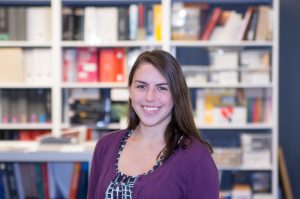
Q: What building evoked a strong reaction from you recently—either positive or negative?
A: I recently visited the National Museum of African American History and Culture in Washington, D.C. I really enjoyed looking up to see the layers of the facade and envelope as you enter the building, which becomes visible again as you peer out apertures on the upper floors. The exhibits themselves are also very well done. I definitely recommend making a visit.
Q: What is the last book you read?
A: The Alice Network by Kate Quinn
Q: How did you discover your passion for architecture?
A: As a child, I used to draw plans for different dream houses, but I never knew what “architecture” was. When I got to college, I chose to major in architecture knowing very little about the profession. However, the more I learned about design, the more I wanted to learn, and the more passionate I became about pursuing good design. I’ve been really lucky to have discovered my passion in such a way.
Q: What is your favorite thing to do to relax?
A: I like to read a book, especially pool-side or beach-side on a nice day!
Q: What advice do you have for aspiring architects?
A: Don’t be afraid of failure. Very few things are great the first time. Try again and again and again.
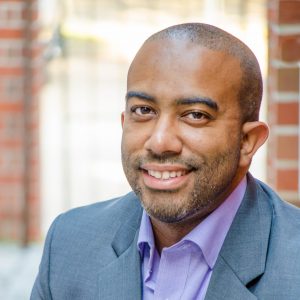
Q: What building evoked a strong reaction from you recently—either positive or negative?
A: I recently had the opportunity to spend some time in Washington D.C. and tour the three buildings that make up the Library of Congress. It was very inspiring. You could feel the knowledge and power just by walking into the space of the main reading room.
Q: What is the last book you read?
A: The last book I read was Art Activism. It’s a collection of artwork, poems, and essays by author: artist Aaron Maybin. Maybin is a former professional athlete who decided to use his platform to challenge social justice issues through his art and activism efforts within the City of Baltimore.
Q: How did you discover your passion for architecture?
A: It started at a very young age when I would draw buildings and build things with my Legos. Architecture has always been something I wanted to do and my passion for it grows as I get older.
Q: What is your favorite thing to do to relax?
A: I don’t get much time to relax, but I do enjoy trying new recipes and reading to my two young daughters.
Q: What advice do you have for aspiring architects?
A: Maintain your curiosity of architecture, and get a better understanding of the community you live in. Talk to other people who are not in the industry to challenge your ideas on architecture.
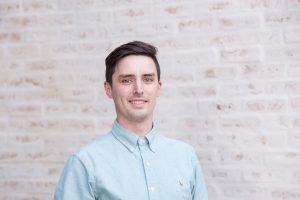
Q: What building evoked a strong reaction from you recently—either positive or negative?
A: The most memorable building I’ve been to is the Fisher House by Louis Kahn. It’s not a large house, but it is so well designed for the purpose of living. In terms of a strong reaction, all of these modern Wendy’s restaurants are something. It’s interesting that some of the most modern and boundary-pushing buildings are now fast food chains…
Q: What is the last book you read?
A: I read a lot of graphic design books and just finished Grid Systems in Graphic Design. I’m currently in the middle of a book called Rich Dad, Poor Dad about financials and business.
Q: How did you discover your passion for architecture?
A: I had a knack for organizing and finding a place for everything, and I’ve always been interested in how things work. Architecture is organizing and learning how things work, with the twist of doing it beautifully.
Q: What is your favorite thing to do to relax?
A: I like to go on a run or tune in to an interesting documentary.
Q: What advice do you have for aspiring architects?
A: Make Mistakes Faster. I think that was hung up in one of the first year studios at school and it stuck with me. It’s totally fine to mess something up, that’s the best way to learn but do it quickly so there is time to correct the mistake.
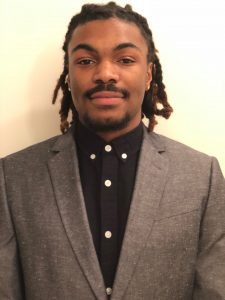
Q: What building evoked a strong reaction from you recently—either positive or negative?
A: Recently I learned about the 7 House by David Adjaye and was impressed by his approach to this infill project and use of black concrete.
Q: What is the last book you read?
A: Managing Your Day to Day: Build Your Routine, Find Your Focus & Sharpen Your Creative Mind
Q: How did you discover your passion for architecture?
A: Through traveling and visiting different cities. This allowed me to begin to understand the sense of place and initiated my desire to create positive environments for people who don’t have the opportunity to experience good architecture.
Q: What is your favorite thing to do to relax?
A: Spend time at the beach but when that’s not available I like to go to the park and spend time with friends.
Q: What advice do you have for aspiring architects?
A: Be dedicated and studious and understand that architecture is a life-long learning process. Understand your why or the reason you want to be an architect so that you can be focused and driven to produce work you’re proud of.

Q: What building evoked a strong reaction from you recently—either positive or negative?
A: I’m really intrigued with historic hotels– the architecture of the buildings and the people who stayed at them. My job has allowed me to work on projects at the Jefferson Hotel and Pinehurst Resort. I could spend hours going through old floors plans and images to see how the spaces and styles have changed over the course of time.
Q: What is the last book you read?
A: The ARE 5.0 Review Manual
Q: How did you discover your passion for architecture?
A: Ever since childhood I’ve always said I wanted to be an architect.
Q: What is your favorite thing to do to relax?
A: Draw, paint or anything creative that doesn’t require sitting in front of a computer.
Q: What advice do you have for aspiring architects?
A: Ask questions and stay curious!
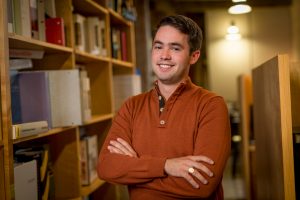
Q: What building evoked a strong reaction from you recently—either positive or negative?
A: The Nathan-Russell House in Charleston, South Carolina. It was built in 1808 and the level of detail an craftsmanship throughout is impressive, however, what was truly most impressive to see was the sweeping 2-story elliptical stair which floats off the wall seemingly without support. To think that they were able to construct something like that nearly 200 years ago using only wood and plaster knowing the structural feats we often go through today to achieve a similar result using steel and all our modern methods were inspiring and impressive to see.
Q: What is the last book you read?
A: This Side of Paradise by F. Scott Fitzgerald
Q: How did you discover your passion for architecture?
A: I have always had a love of buildings since I was young. I used to love looking at the old castles and houses in England and other parts of Europe and would study books on then and other houses in this country obsessively. Additionally, my mom designed the house I grew up in and I used to sit with her as she sketched and would go with her as she picked out materials etc and would visit the house as it was being built. Being exposed to all of that at a young age certainly helped spur my interest further. Ever since a young age all I wanted to study and do when I became an adult was design buildings – particularly houses, which is something I’m fortunate enough to be able to focus on in my current job.
Q: What is your favorite thing to do to relax?
A: When I’m able to one of the most relaxing things in my mind is to get out to the country on the river or go out on the boat – anything on the water. I’ve also always loved horses and riding since I was little and find the connection experienced with the horse and nature when out for a ride can be extremely relaxing and make you forget other concerns for at least a short time.
Q: What advice do you have for aspiring architects?
A: Don’t let professors in college deter you if it’s something you really want to do. For every truly inspirational professor, you have there will be those that will deter you because you differ in stylistic preferences or their desire for everything to be so hyper conceptual it lacks a grounding in the real world. For me, I found such hyper conceptuality a turnoff and something that did not inspire me, however, there is value in what it teaches in the ability to think outside the box. The is also often a common theme that I came across that “if you’re in it for money architecture is the place to be” and while that is true in some regards I was always told growing up that if you follow you’re passions success will follow as well.

Q: What building evoked a strong reaction from you recently—either positive or negative?
A: I’ve been looking at Renzo Piano’s Rue de Meaux; the facade proportions are simple and elegant. It’s inspiring my current project.
Q: What is the last book you read?
A: Does proofreading my thesis documentation count?
Q: How did you discover your passion for architecture?
A: I think I am continuously discovering my passion for architecture, whether in the detail of a project I am working on or by something I experience on my commute work.
Q: What is your favorite thing to do to relax?
A: Anything involving sunshine and the beach, there is just something about salt air.
Q: What advice do you have for aspiring architects?
A: My advice would be to try everything. Use your internships to try out a variety of firm and project types, and then find your niche – find what it is about architecture that excites you the most.

Q: What building evoked a strong reaction from you recently—either positive or negative?
A: I recently saw Ascent at Roebling’s Bridge by Daniel Libeskind. I’ve seen this building many times since its construction. It reminds me how exciting architecture is and how a building can truly affect people.
Q: What is the last book you read?
A: The Pillars of the Earth by Ken Follett
Q: How did you discover your passion for architecture?
A: I always liked math and being creative. I looked into several potential careers, but after touring VT’s architecture school, I just knew it was what I’d been searching for.
Q: What is your favorite thing to do to relax?
A: I enjoy sitting out by the pool with a good book.
Q: What advice do you have for aspiring architects?
A: Don’t forget to add a bit of yourself to each of your projects. That is what makes a building, architecture.
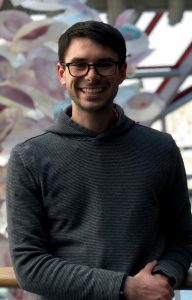
Q: What building evoked a strong reaction from you recently—either positive or negative?
A: The Taipei 101 building in Taipei, Taiwan. What amazes me about the building is less so the building itself, but instead the implications politically the building had and has had since it’s inception. Not only was it a record-setting achievement on both the local and global level architecturally, but influenced a political shift in the region surrounding Taiwan and its geopolitical and economic presence.
Q: What is the last book you read?
A: 101 Things I Learned in Architecture School by Matthew Frederick
Q: How did you discover your passion for architecture?
A: I would use almost anything and everything around to build “towers.” Wooden blocks were the go-to for building a tower – which would be followed by a controlled demolition brought on by catapults, trebuchets, and launchers of all kinds in a fantastic siege to pinpoint the weakest elements of the towers.
Q: What is your favorite thing to do to relax?
A: Right now it would be playing around with Virtual Reality and 3D Printing knick-knacks from the internet to give to my friends so I appear cooler than I really am.
Q: What advice do you have for aspiring architects?
A: Invest in yourself. Find hobbies or activities that you find enjoyable that feedback into yourself productively. Buy that camera, spend those extra few minutes to watch one more tutorial, go to that conference, buy or do that thing that builds up a skill or ability that makes you, you. It will pay for itself, and dividends if you invest in yourself and do what you enjoy.
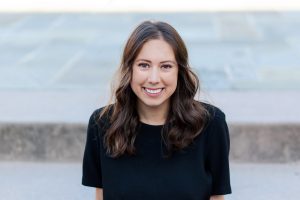
Q: What building evoked a strong reaction from you recently—either positive or negative?
A: Notre Dame du Raincy, a modernist church with a material palette of concrete and stained glass. I found it to be a wonderful study of color and composition.
Q: What is the last book you read?
A: Old Path, White Clouds by Thich Nhat Hanh, a narrative recounting of the life and teachings of Gautama Buddha. On the design front, I am just starting Rudolf Arnheim’s The Power of the Center: A Study of Composition in the Visual Arts.
Q: How did you discover your passion for architecture?
A: Traveling from a young age exposed me to a variety of built environments and contributed to my interest in the relationship between people, culture, and architecture. I always knew I wanted a career that could have a positive impact on people’s lives, and I believe that good architecture has the power to positively impact the lives of its users.
Q: What is your favorite thing to do to relax?
A: Spending time with friends, ideally outdoors.
Q: What advice do you have for aspiring architects?
A: Align your work with your values and set yourself up to do work in which you find purpose.
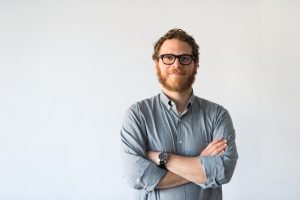
Q: What building evoked a strong reaction from you recently—either positive or negative?
A: Massimo Carmassi – Reconstruction of San Michele, Borgo Pisa. While doing research for a project we are currently designing in our office I came across this project and was very taken by Carmassi’s ability to balance his new intervention with the weight of the historical building. His use of masonry and the carved out sculptural spaces are particularly beautiful in how they interact with light and frame views back to the existing context.
Q: What is the last book you read?
A: Between the World and Me by Ta-Nehisi Coates
Q: How did you discover your passion for architecture?
A: While studying Industrial Design at Pratt Institute I was turned onto Samuel Mockbee and the work done at the Rural Studio. I was inspired by the idea of using design as a way of providing a service to those who design may not normally serve. In addition, I was excited by the spirit of the work and the use of inexpensive materials to achieve simple/beautiful results.
Q: What is your favorite thing to do to relax?
A: Fly fishing and gardening (when not wrangling my two boys)
Q: What advice do you have for aspiring architects?
A: Build physical things, make stuff, and explore materials with your hands. Understanding how things are built and how materials are transformed and put together will make you a better architect – and its fun.
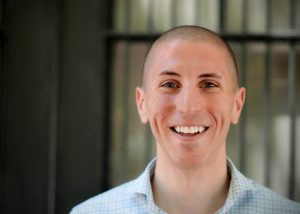
Q: What building evoked a strong reaction from you recently—either positive or negative?
A: I had not been to DC for pleasure in several years since I left my job there to come work in Richmond, but when I lived in DC I always loved the Hirshhorn and thought it was an underrated modern piece of architecture. I visited again just a few weeks ago though, and my appreciation for the building was re-ignited and still love it for what it is – a humble, modern, and honest building with an inherent marriage between form, materiality, and structure.
Q: What is the last book you read?
A: Thinking Architecture by Peter Zumthor, probably for the 9th time as it’s become an annual ritual for me ever since I read it the first time. Zumthor’s words and stories are poetry to me, and every time I read it my passion is reignited and it reminds me why I do what I do, especially when the day-to-day can get tough.
Q: How did you discover your passion for architecture?
A: I wanted to be an architect since I was 7 as I loved art and construction as a kid, but it wasn’t until I visited Belvedere Gardens in Salem as a student at Virginia Tech where my love for architecture was confirmed as I felt as though I truly understood the power of design to uplift the human spirit for the first time, and what the built environment can do to make a positive impact in the world at a range of scales.
Q: What is your favorite thing to do to relax?
A: When I find free time, just about anything with my wife. We’ve come to love enjoying the outdoors together and find ourselves hiking, biking, and stand-up paddle boarding these days to unwind. We’ve also both been getting really into cooking together this year as well.
Q: What advice do you have for aspiring architects?
A: Love what you do. Design is not a job, it’s a lifestyle, and if you don’t love it you’ll have a long and unrewarding career. If you love it you can make great things, teach others to find their passion, and better the community around you. Besides, it’s too much fun not to love.
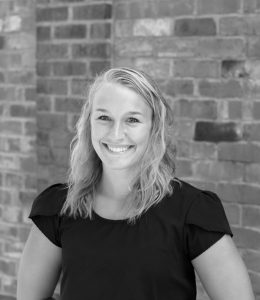
Q: What building evoked a strong reaction from you recently—either positive or negative?
A: Center in the Square in downtown Roanoke. This is one of my favorite buildings in Roanoke because it serves as a landmark and central hub for activity in downtown. I also really enjoy this building because the firm that I currently work for, Spectrum Design, did the revamped renovations for this building. Whenever I have family or friends come to town to visit, I always take them in this building and up to the rooftop to see the great view of downtown and surrounding mountains. I love hearing other people talk about how much they love this building and like going to events here- it has certainly had a positive impact on the community and downtown Roanoke!
Q: What is the last book you read?
A: The Image of the City by Kevin Lynch.
Q: How did you discover your passion for architecture?
A: Growing up, I was always on the more creative side. I found joy in building things out of sticks and stones from my backyard and also playing with Legos and Lincoln Logs. I also used to sit in from of the TV and sketch the characters in cartoon shows. Starting as a high school Freshman, I took my first drafting course- and yes, actual hand drafting. I continued to take more drafting courses every semester until I graduated high school and decided to go on and pursue a career in architecture.
Q: What is your favorite thing to do to relax?
A: This isn’t necessarily relaxing (not at all actually) but my favorite thing to do outside of work/architecture is CrossFit. I really enjoy pushing myself physically, getting stronger and competing. It has certainly become a hobby of mine!
Q: What advice do you have for aspiring architects?
A: Don’t be afraid to ask questions and always try to collaborate with your peers! Be an observer as well as a go-getter. Learn as much as you can from those that you look up to and always try to apply what you’ve learned. Only being a year out of school, I have already learned so much from my co-workers and continue to learn something new every day.
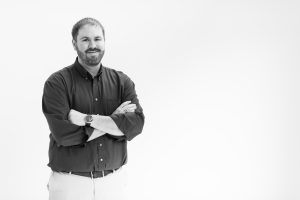
Q: What building evoked a strong reaction from you recently—either positive or negative?
A: Not a building, however an entire city. A trip to Charleston, South Carolina reminded me why I fell in love with architecture.
Q: What is the last book you read?
A: The Ballast ARE book as I am in the middle of taking my exams.
Q: How did you discover your passion for architecture?
A: Growing up in Central Virginia, our class trips frequented some of the great historic homes of the area. I discovered my passion for architecture through these early site visits and dreamed of what I could create one day when I became an architect.
Q: What is your favorite thing to do to relax?
A: Being outside working in the garden, helping out on the farm and spending time with friends and family.
Q: What advice do you have for aspiring architects?
A: Always be open to new ideas and avoid becoming set in your ways. Travel the world to see new things and spend time outside of the office environment are great ways to make sure this happens.
The 2018 Emerging Leaders in Architecture (ELA) program has completed their fourth session of the year and it is shaping up to be a great year!
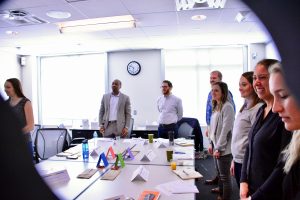 The April session was titled Practicing Professionalism and focused on the esteemed role of the architect as a pillar of the community that is looked to for leadership by many stakeholders. StrengthFinders certified coach, Kahtra Kayton, worked with the class to review their CliftonStrengths. Class participants learned more about their own strengths, shared it with the group, and then discussed how these attributes could best elevate the group’s performance on the class project. Next, Missy Rand conducted a dynamic session entitled Ethics and Standards of Practice. During this component, the class split into groups to role-play and discuss real-world examples of scenarios that firm leaders may face. Alison Mullins, Esq. led off the afternoon with her engaging and laugh-producing presentation At the Crossroads of Contracts, Construction Documents, and Licensing Obligations. A topic normally considered mundane by many was presented in an attention captivating way that taught the class key points in risk management. The session concluded with Paul Beckman’s Building Codes, which covered best practices in permitting and document review processes during the various design phases.
The April session was titled Practicing Professionalism and focused on the esteemed role of the architect as a pillar of the community that is looked to for leadership by many stakeholders. StrengthFinders certified coach, Kahtra Kayton, worked with the class to review their CliftonStrengths. Class participants learned more about their own strengths, shared it with the group, and then discussed how these attributes could best elevate the group’s performance on the class project. Next, Missy Rand conducted a dynamic session entitled Ethics and Standards of Practice. During this component, the class split into groups to role-play and discuss real-world examples of scenarios that firm leaders may face. Alison Mullins, Esq. led off the afternoon with her engaging and laugh-producing presentation At the Crossroads of Contracts, Construction Documents, and Licensing Obligations. A topic normally considered mundane by many was presented in an attention captivating way that taught the class key points in risk management. The session concluded with Paul Beckman’s Building Codes, which covered best practices in permitting and document review processes during the various design phases.
The group continues to advance with the class project. The next session will take place in Richmond on May 11.
Special thanks go out to the sponsors of the 2018 ELA program and to all who contribute in any capacity to make the program a success.
ELA Program Sponsors:
Patron ($1,500 – $1,999)
Moseley Architects
Sustaining ($1,000 – $1,499)
Hampton University
Supporter ($500 – $999)
SMBW
VMDO Architects
AIA Central Virginia
Contributor ($1 – $499)
Alloy Architecture & Construction
Clifton Tiller, AIA
2Plys
Jacobs
NFM Lending
Maya Restaurant
This year’s class of the Emerging Leaders in Architecture (ELA) program project will focus on the 10th & Page neighborhood of Charlottesville. The 10th & Page neighborhood is a traditionally African-American neighborhood that has a public housing presence. The city of Charlottesville is in desperate need of affordable housing and the City’s previous actions regarding redevelopment of Vinegar Hill has left a racial inequity that is still present today. Development of the surrounding areas around 10th and Page has led to a neighborhood that’s beginning to feel trapped by car traffic and surrounding, high-rent developments.
On Friday, March 9th, the ELA class met with local residents, local non-profits, and city officials to begin their dive into their work on the project area. City of Promise Program Director, Denise Johnson, spoke to the group about City of Promise’s mission and what they have found out about the area during its work. One thing that was noted was that most people in the neighborhood work from a place of surviving instead of sustaining. During their discussion with the residents, the class found that there has been a sense of tone deafness between the developers and residents. Some families that have lived in the neighborhood for generations are now feeling negative pressures from new surrounding developments.
In addition to their time spent meeting on Friday, the class also took time on Saturday, March 10th to continue their research. The group mapped the area to analyze different aspects of the site including topography, bus routes, school locations, and surrounding commercial buildings. They also continued their discussions with local residents.
Special thanks go out to the sponsors of the 2018 ELA program and to all who contribute in any capacity to make the program a success.
ELA Program Sponsors:
Patron ($1,500 – $1,999)
Moseley Architects
Supporter ($500 – $999)
SMBW
VMDO Architects
AIA Central Virginia
Contributor ($1 – $499)
Alloy Architecture & Construction
Clifton Tiller, AIA
Maya Restaurant
NFM Lending
We are excited to announce the individuals who are part of the 2018 class of Emerging Leaders in Architecture (ELA).
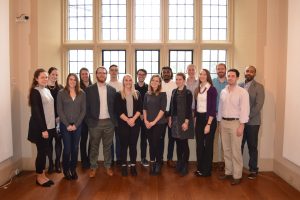
Amber Hall, AIA, College of William and Mary
April Pilcher, AIAS, Virginia Tech
Ian Vaughan, AIA, NAVFAC Mid-Atlantic
Jacob Combee, AIA, Work Program Architects
Jameel Tomlinson, Hampton University
Kalee Hartman, Assoc. AIA, Glave and Holmes
Keith Murphy, Assoc. AIA, 3north
Kim Jusczak, AIAS, WAAC
Laura Green, Assoc. AIA, LeMay Erickson Willcox Architects
Michael Peterson, Assoc. AIA, Ionic Dezign Studios
Nancy Redenius, Assoc. AIA, Hanbury
Noah Bolton, VMDO Architects
Rick Fischl, Assoc. AIA, SMBW, PLLC
Terri Lynn Wolfe, Assoc. AIA, Spectrum Design
Tyler Jenkins, Assoc. AIA, VMDO Architects
Zazu Swistel, AIAS, The University of Virginia
The 2018 Emerging Leaders in Architecture (ELA) program has just finished their second session of the year and they are off to an exciting start!
In the January session, the group heard from architectural historian Bryan Clark Green, Ph.D., Hon. AIA Virginia of Commonwealth Architects and Kelly O’Keefe, head of VCU’s Brandcenter. Bryan Clark Green, Hon. AIA Virginia spoke to the group about the principles of leadership in the architecture profession. He also discussed the origins of the profession and how the definition of who is an architect has changed over time. Kelly O’Keefe shared insights picked up during his life in branding and advertisement as well as during his time as an educator about the importance of creativity in leadership roles. Kelly implored the group to “Never let them take away your creativity”, something his father told him that sticks with him to this day.
The focus of the February session was serving communities and the group heard from excellent speakers. Kathy Galvin, AIA, spoke about her service on the Charlottesville City Council and how important architects can be when discussing policies for improving the community. Co-Founder of the Charlottesville Area Development Roundtable, Bob Pineo, discussed service being the backbone of the practice of architecture. Kurt Keesecker, AIA, spoke to the group about how each expert in the industry can bring a different set of skills to the table. Kurt discussed how he witnessed this take place through his service as Chair of the Charlottesville Planning Commission. There was also a tour of the Sunrise Neighborhood, a development built by Habitat for Humanity of Charlottesville. Rush Otis, of Habitat for Humanity of Greater Charlottesville, discussed with the group the importance of collaborating with the community in assessing its needs, instead of applying a set plan of preconceived notions.
Both sessions were capped off with briefings on the group’s upcoming project. The target area for the 2018 ELA class is the Preston Avenue area of Charlottesville. The group will have their first project work session and meet the neighborhood stakeholders in March.
Special thanks goes out to the sponsors of the 2018 ELA program and to all who contribute in any capacity to make the program a success.
ELA Program Sponsors:
Patron ($1,500 – $1,999)
Moseley Architects
Supporter ($500 – $999)
SMBW
VMDO Architects
AIA Central Virginia
Contributor ($1 – $499)
Alloy Architecture & Construction
Clifton Tiller, AIA
AIA Virginia announces the call for applications for the 2018 class of Emerging Leaders in Architecture (ELA): An Honors Academy of AIA Virginia.
ELA is an intensive program of educational sessions structured around presentations, discussions, team exploration, analysis, consensus-building, collaboration, and case study activities undertaken over the course of a year by a small cadre of participants selected for their potential to be outstanding contributors to the profession and the community. Facilitators and mentors who are established leaders in the building, finance, non-profit, development, university, legal, consulting, and design professions and in the community at large develop and deliver the sessions, designed to provide participants with advanced knowledge and skills related to specific areas of leadership and practice.
The program consists of seven, day-long seminars, several work sessions, culminating with a presentation at Architecture Exchange East.
The application is available here>>
The seminars are interactive, drawing on real examples and actively involving participants. They rotate among sites in Roanoke, Charlottesville, Richmond, Alexandria and Norfolk in conjunction with the firms, schools, and the local AIA component in each area.
How to Apply
The committee seeks applicants from three categories:
Find out more information by downloading the program outline and application or by emailing Marshall Dreiling at mdreiling@aiava.org.
The application deadline is Nov. 16, 2017.
AIA Virginia’s award-winning Emerging Leaders in Architecture (ELA) program was developed to jump-start the careers of young professionals. Conceived of and lead by a passionate steering committee of successful architects, the program was designed to share the things they wished they had learned in architecture school.
Each of the seven day-long-sessions focuses on developing essential skills like financial management, communication and negotiation, advocacy and public service, and much more.
Want to be a member of this elite group of leaders? The application for the 2018 class will be available later this summer. Contact Marshall Dreiling for information on how to nominate an emerging leader or with any questions about the program.
We asked members of the ELA class of 2017 the same five questions, here are their inspiring answers.
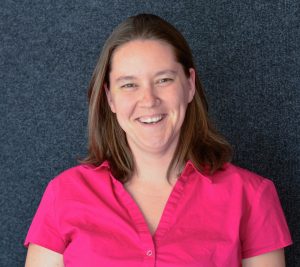 Q: What building evoked a strong reaction from you recently—either positive or negative?
Q: What building evoked a strong reaction from you recently—either positive or negative?
A: Last fall as part of Doors Open Baltimore, I had the opportunity to visit the Baltimore Basilica for the first time. The cathedral itself is awe inspiring, but the best part was going down to the undercroft. The masonry work itself was well worth the visit!
Q: What is the last book you read?
A: Last book I finished was A Man Called Ove and I’m currently reading The Subtle Art of Not Giving a F*ck and Homo Deus, A Brief History of Tomorrow.
Q: How did you discover your passion for architecture?
A: I was introduced to the field of architecture the summer after my freshman year in high school when I was bored and my mom made me get a summer job at the architecture firm in her office building. My passion for architecture came out of a love for both science and art from a young age. I always loved building things, even when they didn’t make sense to anyone but me (pillow forts were the best!).
Q: What is your favorite thing to do to relax?
A: Go to a Nationals game.
Q: What advice do you have for aspiring architects?
A: Don’t be afraid to ask questions. No one but yourself expects you to know everything. Admit when you don’t know something, and make it your mission to learn. If you don’t understand why something is done a certain way ask. Either you’ll learn a lot, or you’ll affect change when the person you’re asking will realize there’s a better way.
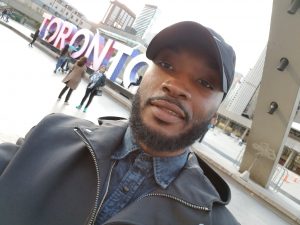 Q: What building evoked a strong reaction from you recently—either positive or negative?
Q: What building evoked a strong reaction from you recently—either positive or negative?
A: The expansion of the Musée National des Beaux-arts du Québec (MNBAQ), is a project with incredibly fascinating details that can be illuminated with simple design. The expansion, designed by OMA, adjacent to the classical cathedral, creates a new creative link between religion, urban vistas, and modern architecture.
Q: What is the last book you read?
A: The last book I read was Contagious by Jonah Berger. The book provides an analytical description on why some ideas come to fruition overnight, while others are unfulfilled. It also explains in a thought- provoking way, how word of mouth and social influence work to make an idea or project contagious.
Q: How did you discover your passion for architecture?
A: Being the son of military service members, and traveling around the world has awarded myself a different perspective on culture, the arts, and architecture. However, it was not until my freshman year of high school when I took my first AutoCAD course that I became fascinated with the field. My natural curiosity and that fascination led my passion for architecture towards continued learning and research, in hopes of mastering the discipline.
Q: What is your favorite thing to do to relax?
A: I own a bright orange 1979 Chevrolet El Camino, which was my first dream car as a child. I love taking it out for a drive, any chance the weather is warm and sunny. It is the most relaxing feeling in the world to me because I feel like I’m driving through Hampton Roads in my own personal time machine.
Q: What advice do you have for aspiring architects?
A: My words of wisdom would be, let ambition and curiosity be your driving force. Many aspiring architects get bogged down within the inner workings of a firm. Never settle; you can see, do, or become anything you want with focus and determination. Be the individual who loves learning and not the individual who knows it all. The world is yours
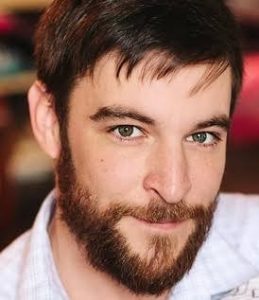 Q: What building evoked a strong reaction from you recently—either positive or negative?
Q: What building evoked a strong reaction from you recently—either positive or negative?
A: The Pantheon embodies materiality and structural expression in its purest form, resulting in a simple yet powerful architecture that reminds one that good design is timeless.
Q: What is the last book you read?
A: Dawn of Art: The Chauvet Cave. Watching my 3yo daughter draw using line quality to render perspective got me thinking about the origins of art and artists. The rendering done by some of our earliest ancestors is exceptionally advanced and shows that art and artists have been an integral part of human culture from the beginning. Highly recommend anyone that isn’t familiar with these paintings check it out.
Q: How did you discover your passion for architecture?
A: A visit to Kahn’s Kimball Art Museum early in my architectural education really solidified in my mind what I understood to be good architecture, and still serves as inspiration. I knew then I had chosen the right career.
Q: What is your favorite thing to do to relax?
A: Scuba diving is the epitome of a controlled breathing exercise, and is like traveling to another world. Backcountry hiking/backpacking is a great way to reconnect with nature, mind, and body. I have hiked in the Olympic and Cascade ranges in the PNW, Crater Lake, Yellowstone, and Yosemite, and hope to hike the Appalachian trail someday.
Q: What advice do you have for aspiring architects?
A: The term “professionally poor” is real, but don’t think you have to spend the rest of your career being paid a small fraction of your billing rate working for someone else. Dylan said “The times, they are a-changin’,” and the days of working your way up the ladder to partnership at a firm for most of your life before you are considered an architect are numbered. With online marketing and social media outlets, one can generate publicity without relying on well-established branding to bring in work. If you build it (well) they will come. Aim high and don’t be afraid to be independent. It’s risky and more work, but I immensely enjoy answering the question “who do you work for?”
 Q: What building evoked a strong reaction from you recently—either positive or negative?
Q: What building evoked a strong reaction from you recently—either positive or negative?
A: Not really one building/ structure, but the entire World Trade Center site. I was recently in NYC for a business trip and my hotel room overlooked the WTC site. I remember everything that happened the morning of September 11th very vividly and visited the site almost a decade ago. To see the transformation from then until now is truly remarkable. One World Trade Center Plaza is pretty amazing in itself – but Michael Arad’s design for the memorial is very powerful and Davis Brody Bond’s Museum (along with Snohetta’s design for the entrance Pavilion to the Museum) complements its well making for a very powerful piece of Architecture. It is definitely something I would recommend anyone who visits NYC to take the time to go visit.
Q: What is the last book you read?
A: Since I am actively taking the ARE – I don’t have much time for other reading, but Vince Flynn is one of my favorite authors at this time. The last book of his I read was American Assassin.
Q: How did you discover your passion for architecture?
A: I was exposed to the profession from an early age because my Father is an Architect. It is something that always interested me and it seems like something I always knew in my mind I would end up doing – the path to get there was just always up in the air. I took a somewhat circuitous route to end up where I am – but I think I always knew in the end, that Architecture was going to be my career choice.
Q: What is your favorite thing to do to relax?
Hang out with Family and Friends. My wife and I are lucky enough to live in the same neighborhood with friends of ours that we have known for a very long time. Watching all of our kids grow up and play together on a daily basis is the best. Our favorite spot to relax is the beach and since we only live a few miles away, we spent a lot of our free time there.
Q: What advice do you have for aspiring architects?
A: Follow your passion. Architecture, as a profession, has many different avenues in which you can pursue a career. Whatever it is that interests you – find that niche and follow through. The most important thing is to find what speaks to you and try to mold your career around that passion.
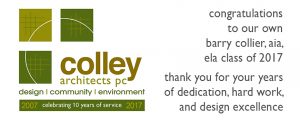
Q: What building evoked a strong reaction from you recently—either positive or negative?
A: Not a specific building, but a type – Cathedrals. The scale and details show all the craftsmanship and skill that was needed to design and build.
Q: What is the last book you read?
A: Right now I have been alternating between code books and the Louden Melrose / Shenandoah West Neighborhood Transformation Plan. The Neighborhood Transformation Plan provides a lot of insight into the area of our ELA class project.
Q: How did you discover your passion for architecture?
A: For as long as I can remember I have always wanted to be an architect. I started by drawing the childhood homes of my parents as a child.
Q: What is your favorite thing to do to relax?
A: Cookout on the grill with a good beer and spend time with my family.
Q: What advice do you have for aspiring architects?
A: Take risks, move somewhere completely new, and get out of your comfort zone. Your experience as an aspiring architect, good or bad, will influence you throughout your entire career.
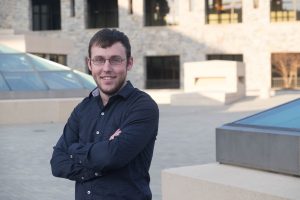 Q: What building evoked a strong reaction from you recently—either positive or negative?
Q: What building evoked a strong reaction from you recently—either positive or negative?
A: La Tourette by Le Corbusier, especially the chapel. I had the opportunity to stay there for two days, which were some of the most relaxing in recent memory.
Q: What is the last book you read?
A: The Last Kingdom by Bernard Cornwell.
Q: How did you discover your passion for architecture?
A: Legos, when I was younger I would always build things with them. After building a set, I’d always take them apart and make my own creations.
Q: What is your favorite thing to do to relax?
A: Play guitar, though I don’t get the chance to play as much as I would like to anymore.
Q: What advice do you have for aspiring architects?
A: As I am still an aspiring architect, I would say to never stop learning. Be aware that you don’t know everything and never be afraid ask questions. If someone is willing to impart wisdom, be willing listen.
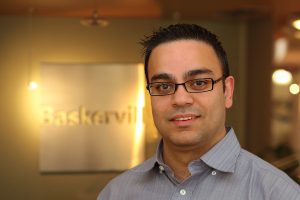 Q: What building evoked a strong reaction from you recently – either positive or negative?
Q: What building evoked a strong reaction from you recently – either positive or negative?
A: The Lerner Hall, at Columbia University, has always been an inspiring piece of architecture for me. The “Glass House” is a 5-story curtain wall structure, which connects the ground floor to the floors above with a series of structural glass ramps and stairs. Walking up those suspended ramps gives a sensation of floating.
Q: What is the last book you read?
A: I prefer audio books, as they always seem to go faster than reading. The last book I read though, would be Born To Run: A Hidden Tribe, Superathletes, and the Greatest Race the World Has Never Seen by Christopher McDougall. The book was inspiring enough for me to do my Architecture Thesis on it.
Q: How did you discover your passion for architecture?
A: I have always been good at Arts and in 6th grade was told I have a future in Architecture. Needless to say, ever since I aspired to become an Architect. Growing up in Dubai, U.A.E. and seeing all the astonishing buildings around, added fuel to the passion.
Q: What is your favorite thing to do to relax?
A: Anything that breaks up the monotony of a daily routine will do. If I had to pick, I would go with either cuddling with the kids on the couch, to watch a movie or watching them play while using their endless imagination.
Q: What advice do you have for aspiring architects?
A: Embrace technology advancement, yet never stop hand sketching. In a technology driven society, that is the one talent, as Architects, we need to hold onto. Computers work fast, but the brain to hand coordination will always out do a computer.
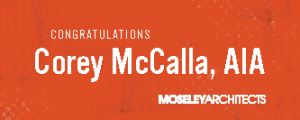
Q: What building evoked a strong reaction from you recently—either positive or negative?
A: VCU’s Institute for Contemporary Art, by Steven Holl (under construction) – I was intrigued to see a building design by Holl, 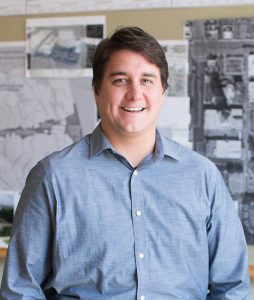 one of my favorite contemporaries, in my city. I look forward to seeing it open and am curious about its life in a historic city.
one of my favorite contemporaries, in my city. I look forward to seeing it open and am curious about its life in a historic city.
Q: What is the last book you read?
A: Wool by Hugh Howey (but really it was Dream Animals: A Bedtime Journey by Emily Winfield Martin, read to my daughter 100+ times)
Q: How did you discover your passion for architecture?
A: Through my father, who is also an architect. He took me to see Kahn’s Salk Institute when I was a teenager, and it changed my life.
Q: What is your favorite thing to do to relax?
A: Seeing a film at the theater.
Q: What advice do you have for aspiring architects?
A: Look for inspiration in every aspect of your life. Whether it comes from traveling, or reading, or film, or simply comes from a conversation at a bar, one can be inspired at any time. And never stop asking questions.
Q: What building evoked a strong reaction from you recently—either positive or negative?
A: What is the last book you read? Architect’s Essentials of Ownership Transition by Peter Piven. For fun, Where the Wild Things Are by Maurice Sendak along with hundreds of other children’s  books with my daughter!
books with my daughter!
Q: How did you discover your passion for architecture?
A: I always enjoyed drawing, painting, and sculpture and intended to pursue a formal education and career in art. During my sophomore year of high school, my art class performed a research project on well-known buildings and their architects; I selected I.M. Pei’s entrance to the Louvre. The energy invested on this exercise opened my eyes to the opportunity to pursue art as a profession on a large scale. I was hooked.
Q: What is your favorite thing to do to relax?
A: Going to the beach and just about anything with my wife and daughter.
Q: What advice do you have for aspiring architects?
A: Be vocal about your goals and opportunities you wish to pursue. Build your knowledge base as broad and as quickly as you can. Seek out a good mentor; someone willing to invest time in you and advocate on your behalf. Soak up the knowledge of experienced members your office by finding out what skillsets they excel at and asking as many questions as they are willing to answer.
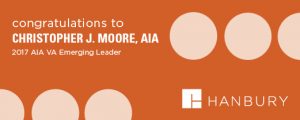
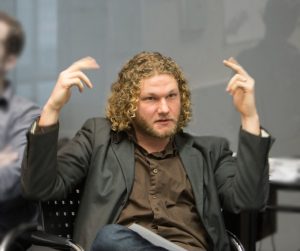 Q: What building evoked a strong reaction from you recently—either positive or negative?
Q: What building evoked a strong reaction from you recently—either positive or negative?
A: The Chesapeake Bay Foundation’s Brock Environmental Center. Not only do I appreciate the thought, design and innovation put into to making it as site friendly as possible, I use the wind turbines as a gauge for water conditions every time I head into or out of the inlet.
Q: What is the last book you read?
A: For Leisure: The Picture of Dorian Gray by Oscar Wilde; For Inspiration: Steal Like an Artist by Austin Kleon; For Work: The Florida Building Code 5th Edition, Chapter 10
Q: How did you discover your passion for architecture?
A: In high school, I enjoyed problem solving and technical drawing. Architecture was the next logical step. It was only later that I discovered it as a theory and an art form.
Q: What is your favorite thing to do to relax?
A: Anything on, in or under the water.
Q: What advice do you have for aspiring architects?
A: Often the “default” solution is the right solution.
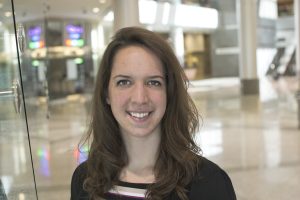 Q: What building evoked a strong reaction from you recently—either positive or negative?
Q: What building evoked a strong reaction from you recently—either positive or negative?
A: The renderings for the design of a vertical farm in the Sunqiao Urban Agricultural District designed by Sasaki Associates. The building is a mixed use, hydroponic vertical farm, and education center amidst the urban fabric of Shanghai. I think it is a beautiful and exciting solution to start to supplement the loss of vast amounts of farmland to rapid urbanization.
Q: What is the last book you read?
A: The Caine Mutiny by Herman Wouk
Q: How did you discover your passion for architecture?
A: When I was seven years old my parents renovated their house. I decided to take matters into my own hands and drew a set of CD’s, complete with a second-floor window to backyard water slide. They ultimately went with the documents generated by the design professional that they had hired, but I’m still striving for that water slide.
Q: What is your favorite thing to do to relax?
A: Run, draw, or play my saxophone.
Q: What advice do you have for aspiring architects?
A: Work hard, push boundaries, and don’t forget to have fun!
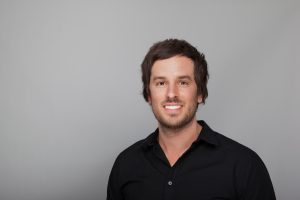 Q: What building evoked a strong reaction from you recently—either positive or negative?
Q: What building evoked a strong reaction from you recently—either positive or negative?
A: The Shard by Renzo Piano had a positive impact on me when I saw it visiting my family and friends back in the UK. The scale of it was immense and I loved how it seemed to pierce the surrounding city landscape. The views from the top were breathtaking.
Q: What is the last book you read?
A: DADA by Jimmy Fallon. I love getting to read this to my newborn girl.
Q: How did you discover your passion for architecture?
A: I always enjoyed visualizing rooms in my house when I was a child and letting my imagination come up with new concepts on how they would look at function. I would also think about my dream home and what it would look like and then I would then start thinking about creating larger buildings that would make an impact in my community.
Q: What is your favorite thing to do to relax?
A: As soon as I get home I love to play with my newborn baby girl. It doesn’t matter how busy my day has been; she always makes me smile. I also love to play and watch sports and go to the gym.
Q: What advice do you have for aspiring architects?
A: Always be open to learning no matter what the project is. Even the smallest of jobs that don’t seem glamorous can have many different things to learn from. Don’t compare yourself to others and don’t try to be someone that you are not.
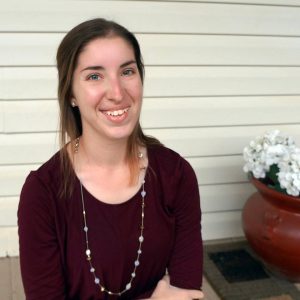 Q: What building evoked a strong reaction from you recently—either positive or negative?
Q: What building evoked a strong reaction from you recently—either positive or negative?
A: The Belvedere Gardens Mausoleum in Salem, VA by SMBW. Its physical and metaphorical connection to the surrounding landscape creates a strong sense of place.
Q: What is the last book you read?
A: Kaplan’s Site Planning & Design Study Guide since I’m in the middle of exams.
Q: How did you discover your passion for architecture?
A: I was tasked with designing my own house as part of a sixth-grade computer class. After the project ended, I started drawing every building I visited and fell in love with architecture.
Q: What is your favorite thing to do to relax?
A: Hiking, riding motorcycles, and spending time with my three dogs.
Q: What advice do you have for aspiring architects?
A: Continue to develop your skills and hobbies outside of architecture. Learn how to communicate your ideas clearly and effectively. Don’t be afraid to ask questions, and never stop learning.
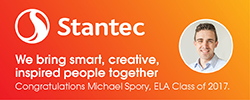
 Q: What building evoked a strong reaction from you recently—either positive or negative?
Q: What building evoked a strong reaction from you recently—either positive or negative?
A: Thorncrown Chapel by E. Fay Jones, in Eureka Springs, Arkansas. The chapel sits so lightly in the forest—somehow you’re in a treehouse, a pavilion, a church, and the Ozark woods, all at the same time. And how it was constructed (every piece of lumber was no larger than could be carried by two workers) aligns with the landscape itself—one of the finest buildings in the country.
Q: What is the last book you read?
A: Garden City by John Mark Comer
Q: How did you discover your passion for architecture?
A: By accident, really. I fell in love with art and photography in college, and architecture seemed like something that took those big abstract ideas and put them into reality through design. As a farm kid, I loved the practicality of architecture alongside the possibility for creativity, so I took a risk, applied to graduate school, and kept on going.
Q: What is your favorite thing to do to relax?
A: Playing soccer. Staying active clears my head.
Q: What advice do you have for aspiring architects?
A: Make (and keep) friends and interests “unrelated” to architecture. It can easily be an all-consuming world, and relating to other ideas and people will not only keep you sane and grounded but also provide a wider array of tools to bring to your designs and practice. Economics, graphic design, literature, philosophy, music—go for it.
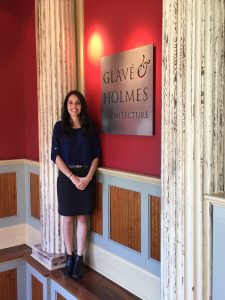 Q: What building evoked a strong reaction from you recently—either positive or negative?
Q: What building evoked a strong reaction from you recently—either positive or negative?
A: The Basilica of Notre Dame in Montréal, CA. It is one of the most colorful church interiors I’ve been in, it was exceptionally beautiful and inspiring.
Q: What is the last book you read?
A: The Magicians by Lev Grossman.
Q: How did you discover your passion for architecture?
A: 6th grade was the first time I said: “I’m going to be an architect.” I drew house plans as gifts for my friends. When my parents were looking for a new house, I loved going on tours and would study the MLS listing sheet.
Q: What is your favorite thing to do to relax?
A: Practicing yoga. It has been a great source of inspiration and enlightenment for me.
Q: What advice do you have for aspiring architects?
A: It’s your practice, do what will make you happy and don’t lose sight of where you want to be keeping in mind that it may change as you change.